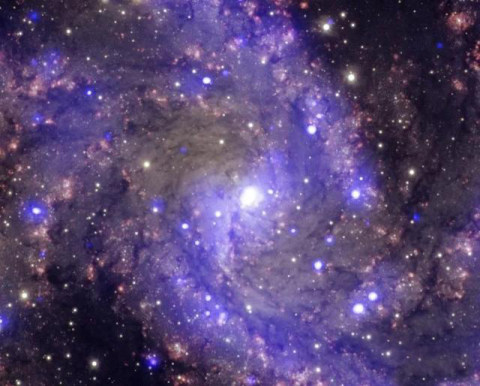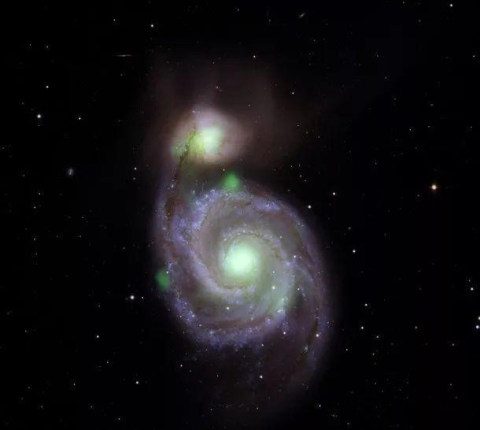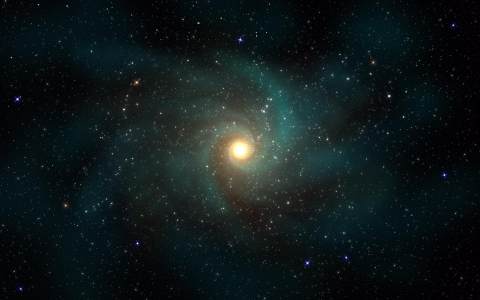
Recently, the U.S. nuclear spectroscopic telescope array in earth orbit captured an extraordinary picture.NASA scientists call the galaxy NGC6946 in this picture the fireworks galaxy.Because the galaxy has found bright flashes, which are so dazzling, these flashes are generated by one of the most energetic events in the galaxy.

NGC 6946 is about 25.2 million light-years away, about 40 thousand light-years in diameter, and one third of the diameter of the Milky way.But it's a relatively dense galaxy, with half the galaxy's stellar population.Scientists find unusual objects in this galaxy, including red elliptical star systems, black nebulae, and supergiant bubbles left after the supernova explosion.

Now NuSTAR, which is in earth orbit, is once again observing NGC6946.The main purpose is to study a supernova in the galaxy. A star several times larger than the sun exploded. The newly observed bright spot is a supernova.Such violence can produce enough bright visible light in a short period of time, scientists say, so many substances heavier than iron, such as gold and platinum, are thrown into space.

10 days is a long time for us, enough for us to travel around the world, but for celestial bodies, it can only be regarded as a flick of a finger.Hannah Earnshaw, a postdoctoral researcher at Caltech in Pasadena, California, said: "we are very lucky to see more gradients over time through NuStar because we don't observe it 24 hours in a row".

It is understood that NuStar is a kind of high-energy X-ray astronomical telescope, which can focus images through X-rays and study distant galaxies.Apart from the discovery of these transient X-ray sources such as ulx-4, most of the light is long-lived because it comes from dense objects such as stars and black holes.The new study has been published in the Astrophysical Journal.

إرسال تعليق